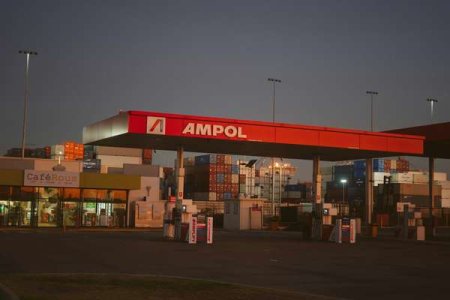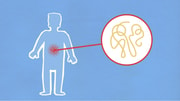‘Could have been catastrophic’: $28,000 fine for tradie over near-disaster at fuel site
- Replies 0
When you think of a trip to the local servo, you probably imagine filling up the tank, grabbing a cheeky chocolate bar, and heading on your way—certainly not dodging a potential disaster!
But for one South Australian petrol station, a routine Saturday afternoon nearly turned into a scene straight out of an action movie, all thanks to a tradie’s shocking lapse in judgement.
Let’s set the scene: It’s April 2022 in Mount Gambier, and Robert Santilli, Managing Director of National Petroleum and Corrosion Services, is called in to decommission a liquified petroleum gas (LPG) tank.
Now, for those of us who aren’t in the business, decommissioning an LPG tank is a delicate operation. The remaining gas should be carefully decanted into secure cylinders.
But instead of following the safety playbook, Santilli was caught on camera venting more than 1,000 litres of highly flammable LPG straight into the open air.

That’s right—he released a dense fog of invisible, explosive gas into the atmosphere, all while customers continued to fill up their cars, blissfully unaware of the invisible danger swirling around them.
‘Video footage obtained during the investigation from [a] mobile phone and the service station’s own CCTV system shows Mr Santilli intentionally releasing a dense fog of gas into the atmosphere over a five-hour period.’ SafeWork SA said in a statement.
SafeWork SA, the state’s workplace safety watchdog, was quick to act. Glen Farrell, Executive Director of SafeWork SA, said, ‘It’s only a matter of luck that this didn’t end up being a devastating catastrophe. It could have been a jet fire, but an explosion would have been the worst-case scenario. A highly dangerous risk to anybody within 30 to 50 metres of that very tank. It’s the worst I’ve seen in the 20 years I’ve been at SafeWork.’
To put it in perspective, LPG is heavier than air and can travel along the ground, pooling in low-lying areas.
All it would have taken was a single spark—a running engine, a static zap, or even a mobile phone—to ignite the gas cloud. The result? A potential flash fire or vapour cloud explosion that could have endangered lives and destroyed property.
The incident was so serious that, even though no one was hurt and nothing actually exploded, the risk alone was enough to warrant prosecution. This is rare—usually, legal action follows an actual incident, not just a near-miss.
But as Judge Calligeros noted during sentencing, ‘Had an ignition source been present within the flammable limits, an explosion could have resulted and could have had dire consequences.’
The fallout? Santilli’s company was slapped with a whopping $98,000 fine, and Santilli himself was personally fined $28,000. That’s a hefty price to pay for cutting corners—and a stark reminder that safety protocols exist for a reason.
For those who might not know, LPG (liquified petroleum gas) is commonly used for everything from BBQs to heating and, of course, fuelling vehicles. While it’s safe when handled properly, it’s also highly flammable.
If released into the air, it can form invisible clouds that are just waiting for a spark. That’s why strict procedures are in place for handling, transporting, and disposing of LPG—especially at busy public places like petrol stations.
Related story: You won’t believe what Aussies are doing at petrol stations—this American was left speechless!

Have you ever seen something dodgy at a petrol station or workplace? Maybe you’ve got a story about a near-miss or a time when safety protocols saved the day. Share your experiences in the comments below!
But for one South Australian petrol station, a routine Saturday afternoon nearly turned into a scene straight out of an action movie, all thanks to a tradie’s shocking lapse in judgement.
Let’s set the scene: It’s April 2022 in Mount Gambier, and Robert Santilli, Managing Director of National Petroleum and Corrosion Services, is called in to decommission a liquified petroleum gas (LPG) tank.
Now, for those of us who aren’t in the business, decommissioning an LPG tank is a delicate operation. The remaining gas should be carefully decanted into secure cylinders.
But instead of following the safety playbook, Santilli was caught on camera venting more than 1,000 litres of highly flammable LPG straight into the open air.

An Australian tradie was fined $28,000 after releasing over 1,000 litres of flammable LPG gas into the air at a Mount Gambier petrol station, with his company also copping a $98,000 fine. Image source: Hc Digital / Unsplash. Disclaimer: This is a stock image used for illustrative purposes only and does not depict the actual person, item, or event described.
That’s right—he released a dense fog of invisible, explosive gas into the atmosphere, all while customers continued to fill up their cars, blissfully unaware of the invisible danger swirling around them.
‘Video footage obtained during the investigation from [a] mobile phone and the service station’s own CCTV system shows Mr Santilli intentionally releasing a dense fog of gas into the atmosphere over a five-hour period.’ SafeWork SA said in a statement.
SafeWork SA, the state’s workplace safety watchdog, was quick to act. Glen Farrell, Executive Director of SafeWork SA, said, ‘It’s only a matter of luck that this didn’t end up being a devastating catastrophe. It could have been a jet fire, but an explosion would have been the worst-case scenario. A highly dangerous risk to anybody within 30 to 50 metres of that very tank. It’s the worst I’ve seen in the 20 years I’ve been at SafeWork.’
To put it in perspective, LPG is heavier than air and can travel along the ground, pooling in low-lying areas.
All it would have taken was a single spark—a running engine, a static zap, or even a mobile phone—to ignite the gas cloud. The result? A potential flash fire or vapour cloud explosion that could have endangered lives and destroyed property.
The incident was so serious that, even though no one was hurt and nothing actually exploded, the risk alone was enough to warrant prosecution. This is rare—usually, legal action follows an actual incident, not just a near-miss.
But as Judge Calligeros noted during sentencing, ‘Had an ignition source been present within the flammable limits, an explosion could have resulted and could have had dire consequences.’
The fallout? Santilli’s company was slapped with a whopping $98,000 fine, and Santilli himself was personally fined $28,000. That’s a hefty price to pay for cutting corners—and a stark reminder that safety protocols exist for a reason.
For those who might not know, LPG (liquified petroleum gas) is commonly used for everything from BBQs to heating and, of course, fuelling vehicles. While it’s safe when handled properly, it’s also highly flammable.
If released into the air, it can form invisible clouds that are just waiting for a spark. That’s why strict procedures are in place for handling, transporting, and disposing of LPG—especially at busy public places like petrol stations.
Related story: You won’t believe what Aussies are doing at petrol stations—this American was left speechless!
Key Takeaways
- An Australian tradie was fined $28,000 after releasing over 1,000 litres of flammable LPG gas into the air at a Mount Gambier petrol station, with his company also copping a $98,000 fine.
- SafeWork SA described the incident as one of the worst in 20 years, stating that venting the gas instead of decanting it safely created an extreme risk of explosion or fire.
- CCTV footage showed the worker releasing the gas over a five-hour period while customers unknowingly continued to use the petrol station, highlighting a major breach of safety protocols.
- The judge and authorities stressed that only luck prevented a catastrophic event, with the released gas capable of igniting and causing devastating consequences for anyone within 30 to 50 metres.
Have you ever seen something dodgy at a petrol station or workplace? Maybe you’ve got a story about a near-miss or a time when safety protocols saved the day. Share your experiences in the comments below!







